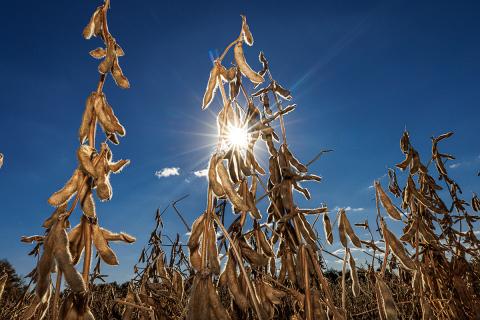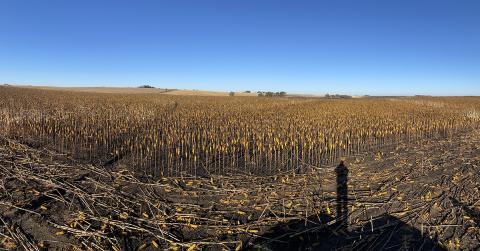Pasture and Forage Minute: Grazing Winter Range, Fertilized Cornstalks
November 8, 2022
Extension educators discuss ways to graze winter pastures and fertilized corn residue fields without risking livestock health or nutrition.
Pasture and Forage Minute: Soybean Residue Forage Benefits, Safe Fall Alfalfa Grazing
November 2, 2022
Extension educators assess the value of soybean residue as livestock forage and share management recommendations for grazing alfalfa to avoid bloat.
FAQ for Fire Damage to Unharvested Crops and Harvested Ground
October 28, 2022
Nebraska Extension educators share recommendations for crops impacted by fire damage, highlighting grain and feed options for unharvested corn, what to expect of soil nutrient loss and techniques to avoid soil erosion.
Crop Residue Exchange Available for Listing Your Corn Residue Acres
November 2, 2023
Many cattle producers rely on corn residue for a winter feed resource. The Crop Residue Exchange can help facilitate a mutually beneficial forage rental partnership between producers.
Pasture and Forage Minute: Corn Residue Options, Grazing Standing Corn
October 18, 2022
Extension Educator Ben Beckman discusses the pros and cons of grazing and baling corn residue, and how to best capture nutrients from grazing standing corn.
Pasture and Forage Minute: Baling Soybean Residue, Winterizing Alfalfa by Growing Degree Days
October 11, 2022
Higher hay prices and forage shortfalls have many producers considering baling soybean residue, but it's important to first analyze the cost effectiveness. Plus — concerns on nightshade and winterizing alfalfa.
Pasture and Forage Minute: Forage Drought Recovery, Prussic Acid in Sorghum
October 5, 2022
Extension educators share insights on the drought recovery process for pastures, how to graze forage sorghum species after freezing temperatures and how to capture the best nutrition from grazing crop residue this fall.
Nebraska Extension's Cover Crop Grazing Conference Set for Nov. 1
October 5, 2022
Nebraska Extension's second annual grazing conference will feature presentations on rotational/strip grazing, perennial and annual forage grazing, live field demos and a producer panel.







